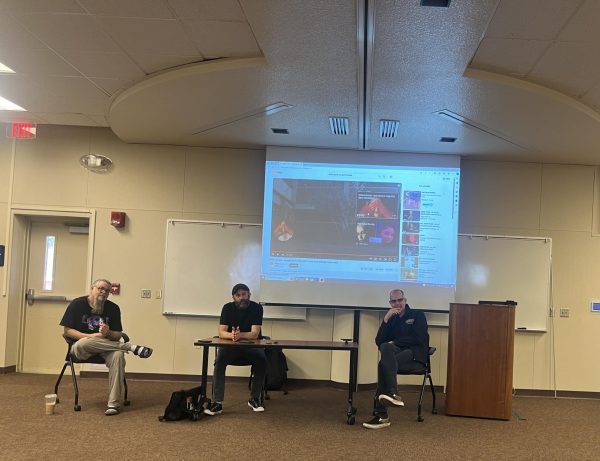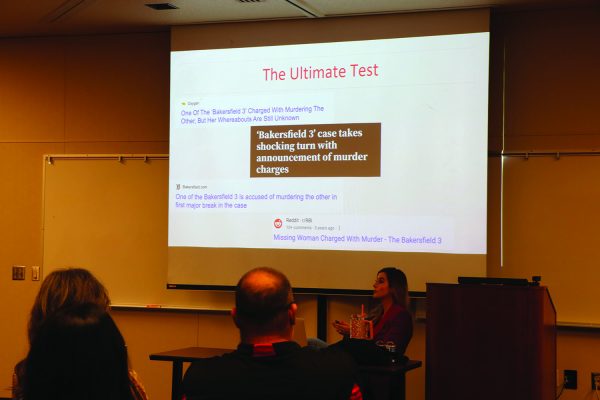California Community Colleges chancellor informs students of changes with AB 705
October 25, 2018
California Community Colleges (CCC) Chancellor Eloy Ortiz Oakley hosted an interview for community college reporters on Oct. 18.
Student reporters in California community colleges were given the opportunity to interview Oakley on various topics such as the Vision for Success, AB 705, the Guided Pathway framework, and much more.
The Vision for Success was adopted by the Board of Governors in 2017. It is a document that is meant to provide guidance in the direction of the CCC system and has a set of goals and commitments.
Oakley described those goals as, “increasing the [number] of credentials students obtain, increasing the number of students that transfer, reducing the number of units that students accumulate, ensuring that they secure gainful employment and earning livable wages, and closing achievement gaps.”
The Guided Pathways framework is a reform with a student-centered approach to close equity gaps while dramatically increasing the number of students earning a community college credential.
According to the CCC News Center’s article on the framework, the goals of the Guided Pathways are to create clear curricular pathways towards employment and further education and help students choose and enter a pathway.
Oakley stated that the framework is part of a structure of changes happening that are focused on closing achievement gaps in community colleges.
Those changes include a modified funding formula and the passage of AB 705 which affect a community college’s ability to place students in remedial classes and change assessment practices.
Oakley said that the changes to the funding formula will support improving outcomes for communities of students that have not been well represented in community colleges.
“We have…modernized the formula and aligned the financial incentives with student needs and success so that more students joining the California Community College system have the opportunity to reach their educational goals,” Oakley said.
He expounded by describing how in the past, community colleges’ only incentive was to increase enrollment. With the new formula, he said that the CCC is balancing enrollment with funding colleges to better support enrollment of students from certain backgrounds. Backgrounds such as those from low-income families, people of color, undocumented students, and Pell grant recipients.
AB 705 passed in October 2017 and took effect in January 2018. It’s a bill that requires community colleges to increase the likelihood a student will enter and finish math and English transfer-level courses in a one-year timeframe by using assessment measures that include high school performance.
Also, because of the bill, assessment practices changed in community colleges by replacing it with what Oakley called the Multiple Measures Assessment and Placement Model.
“What that means is that colleges are creating new systems to determine where a student should be placed based on things like high school GPA, the kinds of classes they have taken, other predictive measures…easily gathered from a student’s experience,” Oakley described.
Oakley went to describe how it is now up to colleges to prove why a student has to take a course that’s not transferable.
Other topics of discussion were the push for reforming the Cal Grant system.
Oakley said that community colleges enroll two-thirds of California undergraduates but receive only seven percent of the Cal Grant funds, with only five percent of community college students receiving a Cal Grant award despite 43% meeting income requirements.
“We’ve introduced a proposal for Cal Grant reform to advance the Vision for Success. It would entitle students to awards based on their financial need…redesign the Cal Grant system by eliminating age and GPA requirements and…ensure Cal grants cover all high-quality certificate and associate degree programs offered at community colleges,” Oakley said.










Kyle Chang • Dec 23, 2018 at 6:21 pm
Remedial Education is a waste of time,money,resources,and energy in College!
Oscar Pineda • Oct 27, 2018 at 6:17 pm
But, what did the college do in preparation for the implimentation of 705? Thorsen stated a “taskforce” was created to study this. But I can tell you that in my experience, out of a class of 45, only 9 students hadnt given up by the withdrawl date. An unrealistic rubric used by this instructor for an entry level course. This is deliberately keeping us at BCC longer by frustrating the spirit of the law. Ridiculous. The teacher turned English into advanced calculus! I was a AP student, I am not a poor student, I am maintaining “B” average in my other courses….BCC is failing, literally and figuratively, us, the students . . .